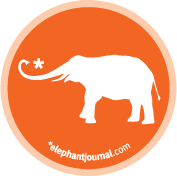Insidious components of Traditional Chinese Remedies.
Traditional Chinese Medicine (TCM) has been practiced as a part of Chinese culture for thousands of years but has only recently become available as supplementary or as an alternative to Western medicine. TCM includes dietary therapy, acupuncture, massage and herbal medicine and accounts for up to 40% of healthcare administered in China. As a result of the rise of this industry (specifically herbal remedies, valued at hundreds of millions of dollars annually), concerns have been raised regarding the efficacy, safety and legality of these teas, powders and tablets.
Recently, a research group at Murdoch University in Australia have analyzed the components of some TCM remedies through DNA sequencing and chromatographic techniques and the findings, published in the journal PLoS Genetics, are alarming. Not only do these “medicines” contain components of critically-endangered species, illegal under the Convention on International Trade in Endangered Species of which China is a signatory, but also heavy metals and toxic chemicals. There are also issues with the packaging of TCM remedies. Pills labeled as Saiga Antelope Horn Powder (an endangered species) actually contained, in some cases, both goat and sheep DNA (i.e., the manufacturer tossed some goat horn in the mix as filler). Further, mislabeled plant-derived products pose a serious threat to health. The researchers discovered Ephedra, a poisonous herb banned in the U.S. as well as various known carcinogens and toxins in a supplement labeled as “laryngitis medicine.” Over-harvesting of herbal remedies for TCM is also leading to extirpation of some plant species in regions of China.
Not only is this bad for our health, it’s torture for the animals.
The use of bear bile as a remedy for liver ailments requires that black bears be kept in cages in which they can barely move, so that bile can be constantly extracted from a hole in their abdomen. Similarly, poachers in Africa capture rhinos, saw off their horn (which can fetch $50,000 per pound on the chinese black market) and leave the hornless rhino to bleed to death as a result, which has reduced the world’s rhino population by more than 90% over the past 40 years. The fact that rhinoceros horn, prescribed for fevers and convulsions, is made out of the same protein that makes up fingernails—keratin—demonstrates the fact that many TCM remedies are considered ineffective (or, at best, placebos) by evidence-based medicine. Although there is often (founded) concern over the morality of the pharmaceutical companies that produce Western remedies, because big money is being made on TCM products it is increasingly necessary to be aware of the health risks, illegality and cruelty involved with these medicines as well. So, if you like biodiversity but don’t like cancer or torture, be smart about what remedies you choose.
Seven common components of TCM remedies:
1. Asiatic Black Bear bile
2. Rhinoceros horn
3. Tiger penis
4. Cow gallstones
5. Snake oil
6. Turtle plastron (shell)
7. Dehydrated seahorse
Note: Although many TCM medicines and remedies are considered nostrums, there are demonstrable benefits of other forms of TCM, such as exercise (qigong) and acupuncture.
Like elephant Health & Wellness and elephant Readers for Animal Rights.
____________________________________________________________________________________________________________________
Dylan Flather currently lives in Southern California but desperately wants to return to Boulder. His favorite activity is taking his dog for a walk.
Ready to join?
Hey, thanks so much for reading! Elephant offers 1 article every month for free.
If you want more, grab a subscription for unlimited reads for $5/year (normally, it's $108/year, and the discount ends soon).
And clearly you appreciate mindfulness with a sense of humor and integrity! Why not join the Elephant community, become an Elephriend?
Your investment will help Elephant Journal invest in our editors and writers who promote your values to create the change you want to see in your world!
Already have an account? Log in.
Ready to join?
Hey, thanks so much for reading! Elephant offers 1 article every month for free.
If you want more, grab a subscription for unlimited reads for $5/year (normally, it's $108/year, and the discount ends soon).
And clearly you appreciate mindfulness with a sense of humor and integrity! Why not join the Elephant community, become an Elephriend?
Your investment will help Elephant Journal invest in our editors and writers who promote your values to create the change you want to see in your world!
Already have an account? Log in.
 Share on bsky
Share on bsky





Read 39 comments and reply